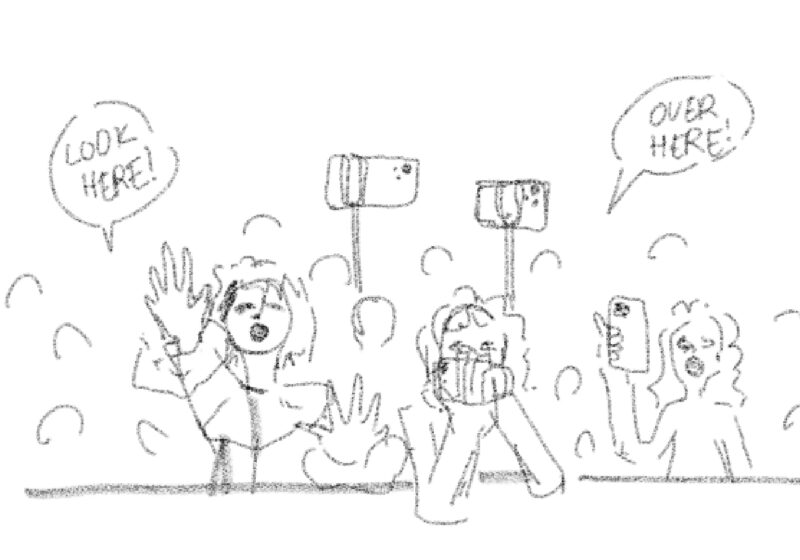‘Warhammer 40K: Dawn of War 2″ is almost upon us. Relic, the game’s developer, has a history of innovation in the real time strategy (RTS) genre, with past releases such as ‘H-omeworld” and 2006’s ‘Company of Heroes.”
As such, ‘Dawn Of War 2″ has quite a legacy to live up to. Not to mention that the first ‘Dawn of War” was, and still is, the closest many people get to the full ‘Warhammer 40K” experience. With all three expansion packs, the game boasts nine playable races, spanning three sections of the Imperium of Man, the Chaos Space Marines, the Tau, the Eldar, the Dark Eldar, the Orks (yes, space orks) and the Necron. About the only notable 40K race left out of ‘Dawn of War” at this point are the Tyranid. Sure enough, ‘DOW 2″ is launching with them. Unfortunately, ‘DOW 2″ is only including the Space Marines, Orks, and Eldar to accompany the new Tyranids.
Any discussion of the first or second ‘Dawn of War” is incomplete without a brief lesson on the world in question. ‘Warhammer 40K” is a tabletop war game set in the year 40,000, long after man’s expansion into space. Essentially the game represents a galactic dark age: humanity blindly follows the catatonic god emperor, alive only through life support, while entire species, such as the Necron, seem to fight purely so as to destroy. In ‘Dawn of War” the Chaos Space Marines were known to remark that attack orders would produce ‘more blood for the blood god,” while the ever loyal Space Marines would commonly make comments such as, ‘blessed is the mind too small for doubt.” Humanity in ‘Warhammer 40K” has formed the Imperium of Man, a highly dystopic society where the will of the aforementioned emperor drives all. Whereas most fictional accounts of dystopia condemn the situation, ‘Warhammer 40K” seems rather excited by the idea. There is little altruism, with the possible exception of the Tau, in Warhammer 40K. Text on the cover of at least one version of the main rule book reads, ‘in the grim darkness of the future, there is only war.”
As seems to be the hip thing to do, the days before DOW 2’s Feb. 10 release are currently marked by an open multiplayer beta.The beta includes the vast majority of the game’s multiplayer, albeit in a somewhat unstable and unfinished state.
Having only a few days with the beta, this article carries the appropriate weight. It would be especially unfair to hold the stability problems against Relic.
In between ‘DOW” and ‘DOW 2,” Relic released a remarkable game with ‘Company of Heroes.” Despite using the tired setting of World War II’s European front, the game introduced a number of excellent innovations to the strategy genre: destructible environments, a realistic cover system, breathtaking graphics and perhaps the fiercest combat ever seen in an RTS with fallen units writhing on the ground even after they have completely lost the ability to fight.
‘DOW 2″ applies many of the improvements from Company of Heroes: the cover system, for example, is practically transplanted. It exhibits a strange ‘less is more” philosophy when it comes to how you play an RTS. Gone are workers. Gone are most player placed buildings. Gone is population management. Resources come in three flavors: requisition, which has a large automatic income that can be bolstered by holding points on the map, energy. This is acquired by via holding and upgrading different points on the map and each race’s unique resource, which is acquired through combat. This last resource is generally only used for special abilities, such as the Ork’s ‘waaagh”(yes, this is the correct spelling) war cry.
As a bit of a RTS purist, I must say I find the changes disheartening. In other RTS, the player makes the choice of which tech tree to follow. ‘DOW2″ removes much of the player’s ability to choose the content of his or her army; about the only choice left for the player is how quickly to climb the linear ladder of technology upgrades, and which of three heroes to start off with.
The hero system in ‘DOW 2″ is severely lacking. The heroes lack the unique personality of the heroes from ‘Warcraft 3,” while also lacking that game’s compelling hero ability system. It is my opinion that a huge part of the success of ‘Starcraft” and ‘Warcraft 3″ stems from the use of animated unit portraits; it personalizes and humanizes your forces. A game such as ‘DOW 2,” with such a focus on units in particular, would have greatly benefited from such a system.
These changes are all in an attempt to refocus the game on the actual combat: a valid effort. Or perhaps the developers wanted to get closer to the tabletop game, where there are no buildings at all. Regardless of their intentions, this new version of ‘Dawn of War” is not what I wanted: It feels simple and shallow, and although I’m not very good at it and it has done little to compel me to get better. In attempt to move the focus from
macro-management to micro-management, Relic has cut out one of the most compelling parts of RTS: the base building. If Sim City has taught us anything, it’s that placing structures and managing economy produces powerful and compelling gameplay.
At the end of the day, ‘DOW 2″ is just not as compelling to me as, say, ‘Warcraft 3.” I suspect I will still play it a bit more, but I firmly believe the departure from RTS convention, while bold, was on the whole a foolish choice by Relic.
Atlas is a member of
the class of 2012.





